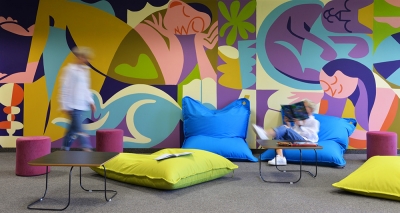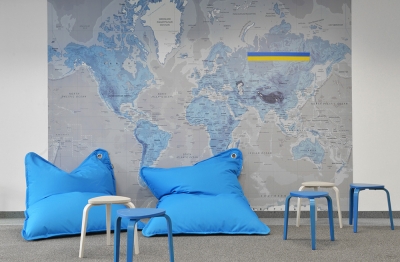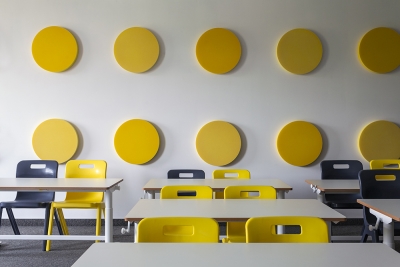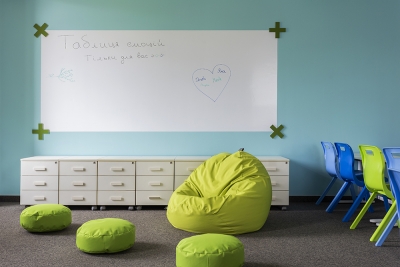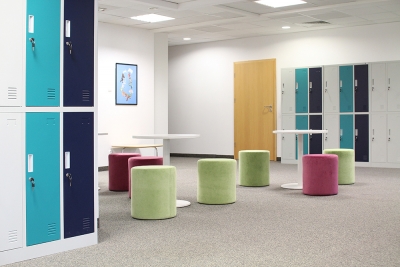School for children from Ukraine - adaptation of the floor in the office building.
Rebuilding Hope: Turning Empty Offices into a School for Ukrainian War Refugee Children.
In response to the war in Ukraine, we transformed a vacant 1200 m2 floor of an office building (Warsaw, PL), into a school for over 300 Ukrainian children (6-17 yo). We did it pro bono in just 2 months, with the voluntary involvement of 52 companies and > 200 volunteers.
What does our school, created spontaneously and in the spirit of zero waste, bring to this honorable competition? We realize it may be hard to compare it with the most spectacular projects of the past months. Nevertheless, working on the school for Ukrainian refugee children made us fully grasp the significance of the architect's role as a public trustee.
In today's world, communities constantly facing crises and challenges need not only our professional skills but above all the moral values we uphold and practice. Transforming empty offices into a school, means much more than just constructing walls. We have the power and great responsibility to provide shelter, rebuild hope, and restore dignity to those who have literally lost everything just moments ago.
We aim for this human connection to be the essence of our work.
In February 2022, the war in Ukraine forced 600,000 mothers and children to flee to Warsaw, overwhelming local schools. We joined "We are opening schools” initiative led by Magda Garncarek which aimed at creating a new space for them. We started from scratch, with no budget and a zero-waste approach.
Our goal was to provide a safe and inclusive environment, aiding children's recovery and sense of belonging.
Through thoughtful design solutions such as introverts' corners, artworks donated by Polish artists for the classroom and corridor walls, counseling rooms, emotion boards, and acoustic solutions, we aimed to show these children they are valued and cared for.
We convinced 50+ companies to donate materials and funds. Volunteers helped with painting, flooring, wallpapering, and furniture assembly.
In just 2 months, the school was ready. It has been operational since then, educating 300 children annually. Despite the war, they can meet their peers and continue their education, receiving Ukrainian certificates and passing exams. We've also provided employment for 40+ Ukrainian teachers and empowered mothers to work and support their families.
Our Ukrainian school represents not only a remarkable social initiative and collective effort but also an example of designing in the spirit of a circular economy. We made every effort to reuse materials wherever possible. 90% of the materials were sourced from recycled sources. We reused demolition materials such as doors, profiles, and gypsum boards. Additionally, we utilized leftover flooring, material samples, wallpaper scraps, and more. Most of the furniture came from unsold stock, discontinued collections, or items destined for disposal, which we salvaged. We also implemented several solutions to enhance acoustic comfort in common areas and classrooms.
In 3R projects like ours, crafting a cohesive and visually appealing design using somewhat random materials donated by various contributors poses a significant challenge. We decided to embrace this approach in the school design, resulting in a distinct aesthetic. For example, instead of patching up holes in the floor left by demolishing one wall, we filled them with scraps and samples in contrasting colors. The final effect is both visually pleasing and meaningful - the space tells its own story.

